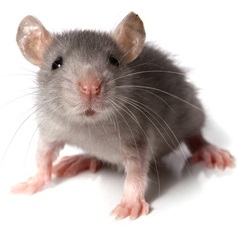Professional Vole Control Services: Utah's Trusted Remedy
Wiki Article
Letting Loose the Power of Vole Bug Control: Advanced Techniques for Invasion Eradication and Therapy

Vole Pest Recognition and Assessment
Voles, little rats that resemble mice but have much shorter tails, are typically identified bugs in backyards and gardens, calling for thorough evaluation to identify the extent of their problem. Recognizing voles involves recognizing their unique functions, such as their stocky bodies, brief legs, and little eyes. They are commonly around 3 to 9 inches long and can differ in color from grey to brownish.Assessing vole invasions is crucial for applying efficient bug control approaches. Signs of vole visibility consist of paths in verdant areas, harmed vegetation, and little burrow openings near the surface area. By evaluating these indicators, home proprietors can gauge the intensity of the infestation and design appropriate elimination approaches.
To accurately evaluate vole populaces, individuals can establish bait terminals or catches to capture and count the rats. In addition, observing vole task patterns can offer understandings right into their numbers and circulation across the damaged location. By performing an extensive assessment, individuals can tailor their bug control strategy to effectively fight vole infestations in backyards and yards.
Cutting-Edge Capturing Methods

In addition, some electronic traps are furnished with sensing units and remote surveillance capacities, allowing house owners to track vole task and catch standing from a range, enhancing the overall effectiveness of vole pest control efforts. By integrating these cutting-edge capturing techniques into parasite monitoring techniques, house owners can deal with vole infestations with precision and concern.
Strategic Exemption Approaches
Applying calculated exclusion approaches is vital in stopping vole problems and protecting gardens and lawns from damages created by these bugs. These barriers must be buried at the very least 12 inches deep and rise 6 inches above the ground to prevent voles from tunneling underneath or climbing up over them.Another crucial exclusion approach is making use of crushed rock or rock mulch rather than natural compost. Voles are less most likely to tunnel with rough terrain, making this a less attractive atmosphere for them. Frequently inspecting the boundary of the yard or lawn for spaces in fencings, structures, or walls is important. These access points ought to be secured with materials like concrete or steel blinking to prevent vole gain a knockout post access to.
Eco-Friendly Repellents and Deterrents
Utilizing ecologically pleasant repellents and deterrents is a lasting approach to handling vole populations and decreasing damages to yards and backyards. Environmentally friendly options are getting popularity because of their efficiency in repelling voles without causing damage to the setting, pet dogs, or beneficial wild animals. One common environmentally friendly method is making use of natural vole repellents such as castor oil, killer, or garlic urine, which create unpleasant aromas for voles, driving them far from dealt with locations.One more environmentally friendly deterrent is the use of physical barriers like cord mesh or equipment fabric to protect at risk plants and light bulbs from vole damages (vole pest control). These barriers work as a safety net against vole intrusion while enabling correct oygenation and water drainage in the dirt
In addition, introducing vole predators like owls or mounting nest boxes can assist naturally control vole populaces in a yard or lawn. By urging all-natural predators, a well balanced community can be maintained without the requirement for harmful chemicals or traps. Generally, including environmentally friendly repellents and deterrents in vole bug control strategies advertises lasting and ecologically conscious techniques.
Integrated Parasite Monitoring Solutions
A holistic strategy to taking care of vole populaces and mitigating damages in backyards and yards includes the comprehensive approach of Integrated Pest Administration Solutions. Integrated Bug Administration (IPM) integrates numerous strategies to attend to vole infestations efficiently while lessening environmental effect. This strategy incorporates biological, social, physical, and chemical control approaches to attain long-term insect control.One key aspect of IPM is the focus on avoidance. By carrying out actions such as habitat alteration, exemption methods, and maintaining proper yard hygiene, house owners can develop environments much less conducive to vole habitation. Furthermore, biological controls, such as presenting all-natural killers or making use of vole-resistant plant selections, can aid take care of vole populaces without resorting to chemical interventions.
This reduces the total chemical tons on the community while successfully taking care of vole populations. By adopting Integrated Insect Administration Solutions, property owners can achieve sustainable vole insect control while promoting ecological community health in their gardens and lawns.
Conclusion
Finally, the advanced techniques for vole parasite control discussed in this write-up supply reliable remedies for infestation obliteration and treatment. By applying a combination of capturing, exemption, repellents, and integrated parasite monitoring strategies, home owners can efficiently handle vole populaces and stop more damage. It is essential to correctly assess and recognize vole insects, and use environment-friendly techniques to attend to problems in a sustainable fashion. These techniques offer an extensive method to vole parasite control for long-term success.As the perseverance of vole infestations continues to challenge home proprietors and farming experts alike, the quest for much more efficient and reliable parasite control methods intensifies. Additionally, some electronic traps are geared up with sensors and remote tracking capacities, enabling house owners to track vole activity and trap status from a distance, improving the general effectiveness of vole insect control efforts. One common green method is making use of all-natural vole repellents such as castor oil, garlic, or killer urine, which develop undesirable fragrances for voles, driving them away from treated areas.
Additionally, introducing vole click for source predators like owls or installing nest boxes can assist naturally control vole populations in a yard or lawn - vole pest control. By embracing read this article Integrated Insect Management Solutions, homeowners can attain lasting vole insect control while promoting community health in their yards and lawns
Report this wiki page